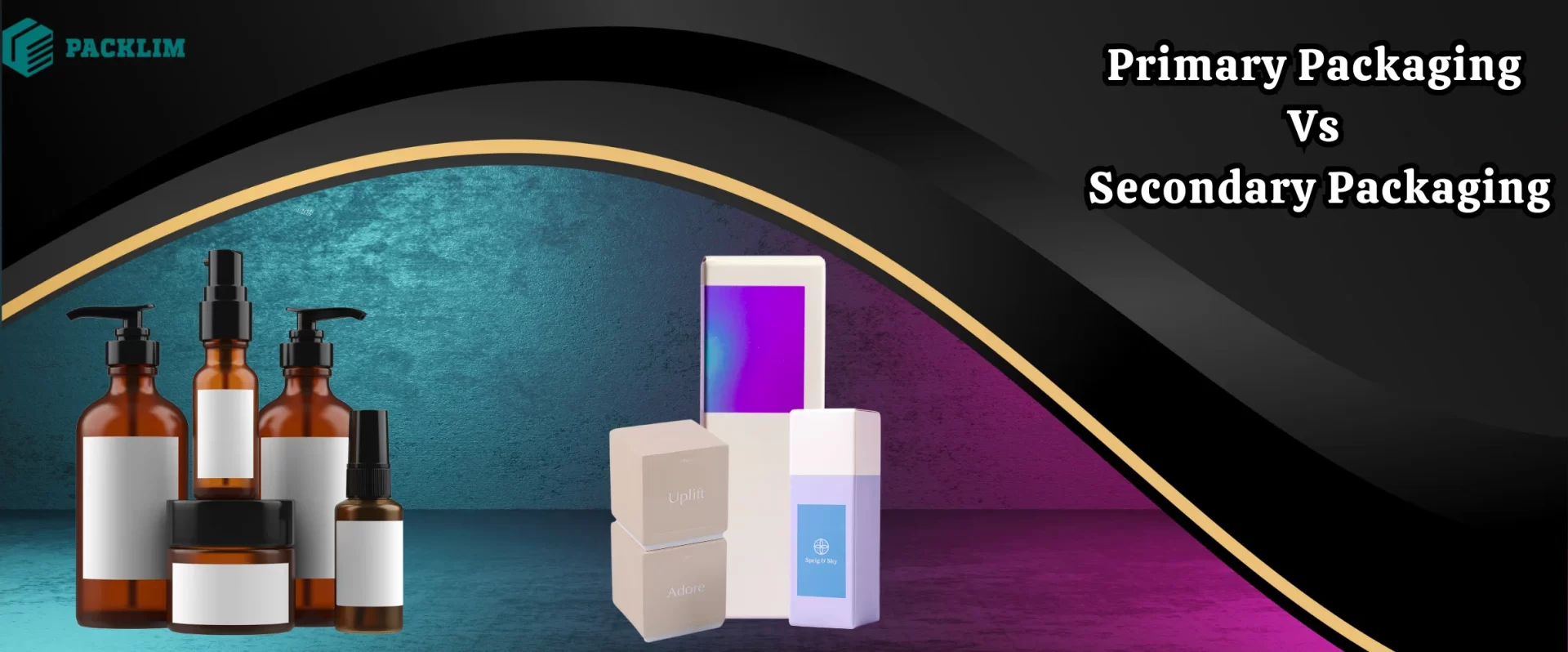
Primary Vs Secondary Packaging: Key Roles in Protection & Branding
Packaging is an important feature for the protection and aesthetics of any product. Protect the products from any potential damage and play a crucial part in marketing. Packaging is categorized into two types: primary and secondary packaging. Let’s discover the benefits and distinctions between these two types of packaging. They are important for businesses looking to optimize their product’s span from the manufacturing line to the user’s hands.
What is Primary Packaging?
Primary packaging is the first layer of packaging of products. It has direct contact with the product and is the most essential component of packaging. It protects the product from contamination, damage, and other elements during storage and shipping. The primary packaging is designed to preserve the quality of the products. Ensure product safety and maintain quality until it reaches the customer.
Functions of Primary Packaging
- Protection: Safeguard the product from physical damage, contamination, and deterioration. For example, a water bottle is encased in a glass bottle that prevents it from spilling or breaking.
- Maintenance: Primary packaging preserves the product’s lifespan by preventing exposure to air, moisture, and other external factors. Food products are packaged in airtight containers to extend their freshness and flavor.
- Convenience: This type of packaging is designed with the user experience in mind. It offers ease of use, storage, and disposal. It comes with resealable bags, squeezable tubes, and easy-to-open jars.
- Information: Primary packaging serves as a platform to communicate essential information. The labels include ingredients, usage instructions, nutritional information, expiration dates, and safety warnings.
- Branding: Beyond its protective functions and is often the first thing a consumer sees. It creates brand recognition and loyalty. Captivating designs, logos, and colours make the product stand out on the retail shelves.
What is Secondary Packaging?
Secondary food packaging is the external layer of packaging that encases the primary packaging. It protects, delivers, and presents the product. Secondary packaging comes into direct contact with the product itself. It plays a crucial role in the logistics and marketing of the product.
Functions of Secondary Packaging
- Protection: Secondary packaging provides an extra layer of protection to the primary package. It keeps your products safe during transit and handling. It helps group multiple units of the primary custom packaging. Make the product easier to store and transport.
- Branding: it also plays a significant role in branding and marketing. It offers ample surface for promotional messages, product information, and branding elements. This is particularly important for retail environments to attract consumers. It conveys the product’s value proposition.
- Efficiency: it helps in the efficient handling, storage, and transportation of products. It minimizes the risk of damage and loss during transit and easier for retailers to manage their inventory.
- Sustainability: brands are focusing on compostable secondary packaging options. This involves recyclable materials, minimizing excess packaging, and, reusable options. This type of packaging has a wide range of applications in preparing bakery boxes like custom waffle boxes or fast food boxes such as custom burger boxes and hot dog boxes. Thereby, it reduces the environmental impact of packaging waste.
- Consumer Experience: enhance the consumer’s unboxing experience. It is used for electronics, luxury goods, and other products. Eye-catching design and premium materials enhance the perceived value of the product.
The Interplay Between Primary and Secondary Packaging
The relationship between primary and secondary packaging is efficient. Primary packaging must be compatible with secondary packaging. They ensure the overall effectiveness of the packaging strategy. Fragile packaging may require sturdy secondary packaging to prevent breakage during shipping. Moreover, primary packaging design can influence the choice of secondary packaging material. Primary packaging is designed to be visually appealing for direct consumer interaction. It might need transparent or windowed packaging to showcase the product inside.
The Importance of Packaging in Branding and Marketing
Both primary and secondary packaging plays a critical role in branding. The design and colors influence a user’s perception of the brand. Any type of brand from food to cosmetic can get the best performing fast food boxes and cosmetics packaging according to its brand vision. Consistency in packaging helps build brand recognition and loyalty. Moreover, packaging is a powerful tool for differentiating a product from its competitors. In the era of e-commerce, secondary packaging has taken the lead. When customers unbox their online purchases, the secondary packaging serves as a touchstone of the brand experience. Brands are investing in aesthetically pleasing packaging designs to enhance customer satisfaction. It helps encourage social media sharing and drive brand visibility and sales.
Summing Up
To sum it up in this comparative study, primary and secondary packaging are integral components of a product’s lifecycle. Each plays distinct yet complementary roles. Primary packaging focuses on protecting and maintaining the integrity of the product. Secondary packaging ensures safe transport, enhances brand visibility, and contributes to the overall user experience. Protect your products and build stronger connections with customers. Contribute to a more sustainable future with eco-friendly packaging.
